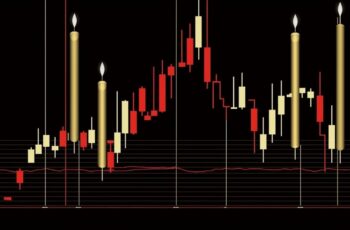As the cryptocurrency market matures and attracts millions of investors worldwide, the significance of risk management in crypto trading becomes increasingly critical. With the market’s inherently volatile nature, traders often face substantial losses if they fail to adopt proper risk management strategies. This article emphasizes the importance of risk management in the cryptocurrency trading landscape, explores various strategies traders can utilize, and presents proven facts and examples to illustrate their effectiveness.
I. Grasping the Risks in Crypto Trading
1.1 Market Volatility
The cryptocurrency market is famously volatile, with prices frequently experiencing dramatic fluctuations within short timeframes (1). This volatility presents traders with opportunities for profit as well as risks of loss. Comprehending and managing these risks is essential for achieving long-term success in crypto trading.
(1) Bouri, E., Shahzad, S. J. H., & Roubaud, D. (2019). Co-explosivity in the cryptocurrency market. Finance Research Letters, 29, 178-183.
1.2 Regulatory Risks
The regulatory landscape for cryptocurrencies remains unsettled, as governments and regulatory bodies work to establish appropriate rules and guidelines. Consequently, traders may confront risks related to sudden regulatory changes, which can impact the value and liquidity of specific digital assets.
1.3 Security Risks
Crypto traders must also be mindful of security risks linked to trading platforms and digital asset storage. Hackers and other malicious actors persistently target trading platforms and individual wallets, resulting in losses amounting to billions of dollars.
II. Employing Risk Management Strategies
2.1 Diversification
Diversification is one of the most fundamental yet effective risk management strategies. By investing in a varied range of digital assets, traders can mitigate the overall risk associated with their investments. Diversification can be accomplished by gaining exposure to different cryptocurrencies, sectors, and geographical regions.
2.2 Position Sizing
Another vital risk management strategy is position sizing, which entails determining the suitable amount of capital to allocate to a single trade. By adopting a percentage-based approach, traders can effectively limit potential losses and avoid overexposing themselves to a single investment.
2.3 Stop Loss and Take Profit Orders
Stop loss and take profit orders are indispensable tools for managing risks in crypto trading. These orders enable traders to automatically close a position when a predetermined price level is reached, effectively minimizing losses and securing profits.
2.4 Risk-Reward Ratio
The risk-reward ratio is a metric employed to assess the potential return of an investment relative to the risk involved. By maintaining a favorable risk-reward ratio, traders can ensure that potential gains surpass potential losses, fostering long-term profitability.
III. Real-World Examples of Risk Management Success
3.1 Cryptocurrency Hedge Funds
Cryptocurrency hedge funds have surfaced as sophisticated investment vehicles that employ various risk management strategies to navigate the turbulent crypto market. By utilizing techniques such as diversification, position sizing, and derivatives, these funds have managed to generate consistent returns despite market fluctuations (2).
(2) Stulz, R. M. (2003). Risk management and derivatives. South-Western College Pub
3.2 Successful Crypto Traders
Numerous successful crypto traders credit their performance to the consistent application of risk management principles. These traders underscore the importance of maintaining discipline, setting realistic profit targets, and continuously adjusting their strategies to adapt to ever-changing market conditions.
IV. Conclusion
In the rapidly evolving world of cryptocurrency trading, effective risk management is vital for long-term success. By understanding the risks associated with the market and implementing strategies like diversification, position sizing, and the use of stop loss and take profit orders, traders can mitigate potential losses and enhance their returns.
The examples of cryptocurrency hedge funds and successful traders showcase the real-world benefits of adhering to risk management principles. As the cryptocurrency market continues to expand and mature, traders who prioritize risk management will be better equipped to navigate the inherent volatility and capitalize on the opportunities offered by this emerging asset class.
FAQs
What’s risk management in crypto trading?
Yo! Risk management is like your crypto lifejacket. It’s about having strategies in place to limit potential losses. Think of it as not putting all your eggs (or satoshis!) in one basket.
Why’s it so crucial for crypto?
Because, dude, the crypto market’s wilder than a bull in a china shop! Super volatile. Without solid risk management, you’re just gambling.
Is stop-loss a must-have?
Absolutely, my friend! It’s your exit ticket if things go south. Set a price where you’ll bail to avoid massive losses. It’s like your “nope” threshold.
What’s the deal with position sizing?
It’s all about not going ham with your capital. Basically, don’t use all your stash in one trade. If that ship sinks, you don’t wanna be on it!
Any tools I should be using?
For sure! Dive into TA (Technical Analysis) tools. Fibonacci retracement, moving averages, RSI – these are your new besties.
How do I set my risk-reward ratio?
It’s your roadmap, pal. For instance, if you aim to gain 3x what you’re willing to lose, that’s a 3:1 ratio. Always know your exit and profit points.
How often should I review my strategies?
Markets shift like sand in the desert. Regularly, mate. Stay on top, adapt, evolve. Don’t get left hodling the bag.
What’s ‘FOMO’ and should I avoid it?
FOMO’s the “Fear Of Missing Out”. It’s that itch when prices skyrocket. But remember, emotions and trading? Bad mix! Stay frosty and stick to your plan.
Is diversification a good move?
100%! Spread your assets. Don’t just HODL Bitcoin. Explore altcoins, DeFi, staking. It’s like not betting everything on one horse.
Should I follow market sentiment?
Market sentiment’s a fickle mistress. It’s useful, but don’t get swept away. Do your own research (DYOR) and use sentiment as just one of many indicators.
What if I make a bad trade?
Happens to the best of us, champ. Learn, adapt, move on. Never revenge trade; it’s a rabbit hole you don’t wanna go down.
Any golden rule?
Always! “Only invest what you can afford to lose.” It’s the OG crypto mantra. Stick to it, and you’ll navigate these choppy waters.




